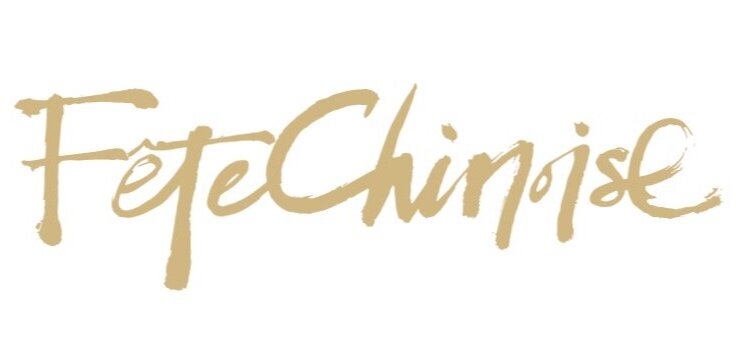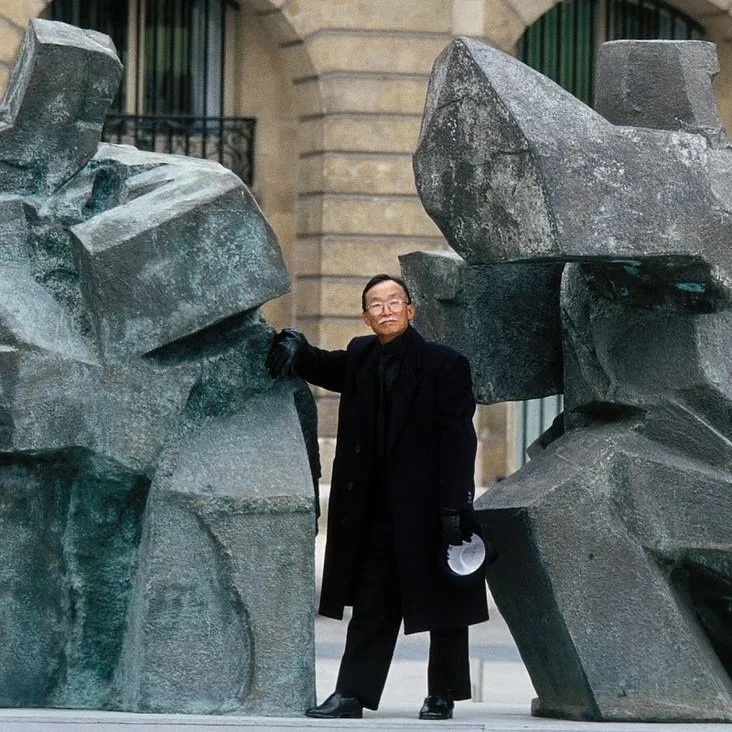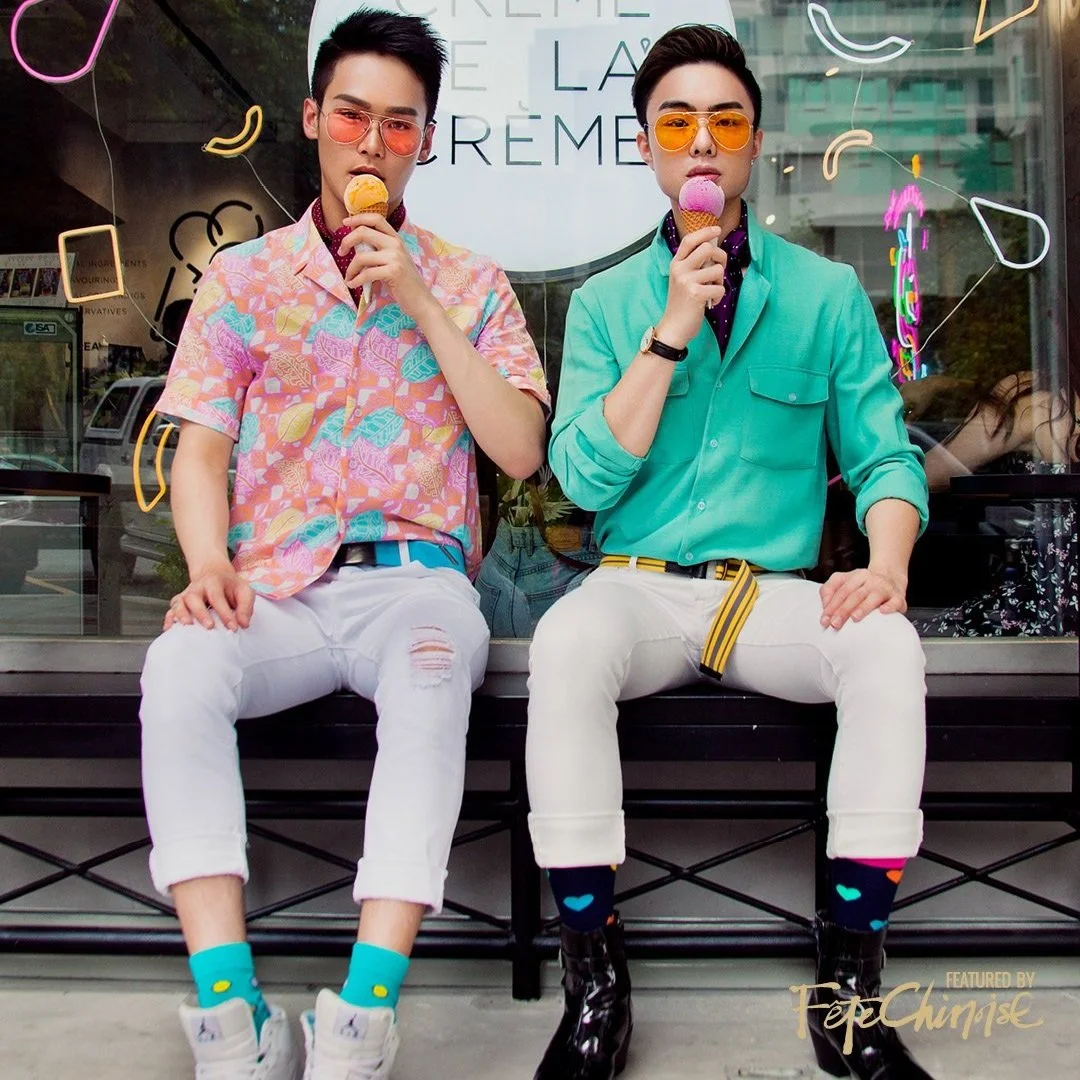Qipao: Heart of a Craftsman 東方美‧匠人心‧旗袍韻
Written by Lisa Fang
Translated by Jennifer Lau · Edited by Fête Chinoise Team
Photography by Claudia Hung & Justin Wong, Wedding Editorials
TAYLOR (HYMAN) CHU, 2011 MISS HONG KONG PAGEANT RUNNER UP and MISS WORLD REPRESENTATIVE FOR HONG KONG, captured here in a cheongsam by yi-ming oriental, at ISLAND shangri-La, Hong Kong. PHOTO: WEDDING EDITORIALS.
舊式的旗袍我們會在很多民國時期的大家閏秀和非富則貴的女士們圖片中看到。但很明顯受到時代的局限,製作和布料款式都有所局限。近幾十年來,旗袍的穿著越來越趨向於現代與時尚相結合,貼身且較突顯身材的苗條,面料也有更豐富的選擇。
The earlier versions of the qipao found in photographs from the Republican era (1911–1949) were worn by women from prestigious and wealthy families. Since the 1980s, the qipao has gained a reputation for uniting the modern and the fashionable with its ability to highlight the woman’s figure and integration of a wider selection of materials.
帶著對中國傳統文化的熱愛和傳承之心,為了更好地了解到旗袍與旗袍的手藝、文化,利用回國的時間,跑遍北京上海杭州的我,終於在朋友的幫助下輾轉聯繫到了在香港的一位真正旗袍匠人許松師傅。
A MODEL WEARS a cheongsam with matching cluthby yi-ming oriental, at ISLAND shangri-La, Hong Kong. PHOTO: WEDDING EDITORIALS.
With a heart for traditional Chinese culture and continuing its legacy, I travelled to Beijing, Shanghai and Hangzhou during my trip back home, in search for knowledge about qipao culture. With the help of several friends, I was connected to an elite qipao craftsman in Hong Kong — master Hui Chung (Xu Song, in Mandarin).
許師傅出身在香港最東面的一個叫西貢的小鎮,父親是舊式的裁縫,所以小時候見慣了些布疋、衣車、裁床、剪刀等等,耳濡目染之下,漸漸的喜歡了裁服,時年十幾歲,便就追隨父親入了行。後來父親身故,許師傅輾轉了幾家當洋服學徒,之後又去到製衣廠做車衣,一邊做車衣工人,一邊學習手工紙樣。這期間用了八年時間進修夜校,學習服飾的專業文化和技術,積累了相當嫻熟技術經驗,之後便成為當時香港高級訂制時裝店的主理人。尤其是秉承著對旗袍的熱愛,許師傅把它視作承載著我們中華文化藝術的一份結晶,他認為旗袍文化是不可以、也不應該受到電腦化、機械化的衝擊而取代的手工藝術,他會用最大的努力保留這份文化藝術,而且發揚和傳承下去。
Master Hui was born in a small village of Sai Kung (Xi Gong) in eastern Hong Kong. His father was a traditional tailor, and from a young age, Master Hui came into contact with clothes, sewing machines, cutting beds, etc. His interest in fashion was formed through exposure. In his teenage years, he followed his father into the trade. After his father’s passing, he served as an apprentice at several western fashion stores, and then began working at textile factories sewing clothes while learning how to design paper patterns. During this time, Master Hui enrolled himself into night classes for eight years to learn about the profession, culture and techniques of the fashion industry.
“匠心手藝就是旗袍最原始的魅力、最珍貴的價值。Through the human touch and artistry required to make the qipao, one finds the value of adorning the qipao.”
After many years of experience, he became the art director of a haute couture brand in Hong Kong. Having a particular passion for the qipao, Master Hui believes that the legacy will continue with its hand-crafted artistry that cannot be replaced by digital technology. He believes that the craftsmanship, embedded within tradition and culture, will assist in its growth and conservation.
與師傅的交談與採訪,令我越來越感嘆與沈醉於旗袍所散發出的巨大魅力,尤其是一件優雅的旗袍背後,投入和付出,往往是大家看不到但卻是最有價值和意義的部分。
MODEL in a cheongsam by yi-ming oriental, at ISLAND shangri-La, Hong Kong. PHOTO: WEDDING EDITORIALS.
During our interview, I was captivated by the alluring power of the qipao. There was something magical about understanding its history and process. Is it not true that the preciousness of a beloved item is almost always unseen by the naked eye, but holds great significance to its owner, giver, and/or maker?
其中,最引人的地方就在於它的量體與裁衣,成衣後的旗袍,總能放大身材的優點,弱化身材的不足。一件旗袍,上身之後的一動一靜,若要做到完美,要考慮的方面則更多:著身的是否稱身、肩部有無褶皺、腹部會不會因為緊繃貼身而產生橫紋、側襟領口服帖、旗袍的開叉是否會走光…,這些,都是對於一位旗袍匠人的量體與裁衣功力的巨大考驗。對於量體,手工訂制旗袍要測量的數據,比一般服裝要復雜得多,就連小小一個肩袖,都要有三到四個尺寸。
The allure of the qipao is found in its shape and tailoring. No matter the body type, the dress is flattering and able to accentuate the good. A qipao dress, if made perfectly, needs to have considered many aspects: no folds in the shoulder area, and proper length of the slit. Meeting these expectations is a huge test for a qipao-maker. The number of measurements needed to make the perfect qipao is much higher than any other dress —- designing the shoulder requires three to four measurements.
一件好的旗袍,製作需要經過一個非常漫長而精心的過程,精準的量體只是第一步,僅在技藝上的手法就有鑲、嵌、滾、宕、盤、雕、鏤、繡這八大,每種技藝都要做到熟能生巧才能得心應手。
To craft an exceptional qipao, a long and rigorous process is involved. Obtaining precise measurements is just the first step. The technique of the craft involving beading, embellishments, and embroidery requires a skilled hand.
在採訪中,我曾問到過這麼一個問題,在旗袍的製作過程中,對於師傅來說,最具有考驗性的是哪一步或是說最難的是哪一步?
I asked Master Hui, “Which step is the most challenging or the most difficult in the process of making the qipao?”
MODEL in a cheongsam by yi-ming oriental, at ISLAND shangri-La, Hong Kong. PHOTO: WEDDING EDITORIALS.
許師傅回於我的答案讓我很有感觸:「我不欣賞同行的有些人,去強調它的難度,因為這或多或少的阻礙了想學和入行者的意欲。這於旗袍的傳承會有不良影響的。其實旗袍的製作是要多做多失敗,自然會逐漸造出優秀的作品。製作上除了紙樣製作和剪裁有一定的功力外,在車縫中的難度則是旗袍的捆條(包邊)、領、襟、袖、腳義等等。而在旗袍高級定制中為了做到完美,我們只有在盡量不影響它的效果中才使用縫紉機 —- 縫紉機的速度快,機械的針步始終有點縮而輕微的拉扯,相對,手針的縫製卻是平服自然流暢。所以,我覺得旗袍定制中最考驗人的應該就是這份魄力去保留手工製作的部分,匠心手藝就是旗袍最原始的魅力、最珍貴的價值。」
He replied, “I don’t agree with those in my trade who stress the difficulty of making qipao. This opinion more or less hinders the desire of possible apprentices who may want to learn the craft, which is bad for the conservation of qipao culture. The production of qipao does require making a fair share of mistakes, but through experience, the fruits of one’s labour will become increasingly beautiful. In the making of a qipao, besides the paper patterns and the cut which require great skill, there are challenging parts in the sewing of the dress such as the seams, the collar, the sleeves, etc. To perfect these haute couture qipao dresses, we must cautiously use sewing machines for its speed. The stitching of a sewing machine can cause slight tension in the fabric that is never the same as handcrafted needlework, which is natural and smooth on the fabric. So, I find the most challenging part of making a qipao is maintaining the presence the handcrafted soul of its production. This soul is captivating. Through the human touch and artistry required to make the qipao, one finds the value of adorning the qipao.”
沒錯,旗袍的文化藝術不單只在量體裁衣的功力,捆條的勾勒,和盤扣藝術之美的錦上添花,以及傳統的刺繡和珠繡等的藝術加工。重要的是,匠人一份心血的勞作,飽含著製作者對美的追求和內心豐盈的喜悅,同時也是穿著者內心和外在一份對中國文化藝術優雅氣質盡情的呈現。作為中國傳統服裝的一塊瑰寶,旗袍傳承著中國文化藝術,被大家喜愛著,被時代流行著,定然有它的寶貴價值。
The most important aspect is the craftsman's loving labour which encapsulates the joy of a full heart and the pursuit of beauty. The qipao embodies both the inner cultivation and external elegance of Chinese traditional artistry — a treasure of Chinese heritage.
MODEL in a cheongsam by yi-ming oriental, at ISLAND shangri-La, Hong Kong. PHOTO: WEDDING EDITORIALS.
Sponsored by piaget.



















